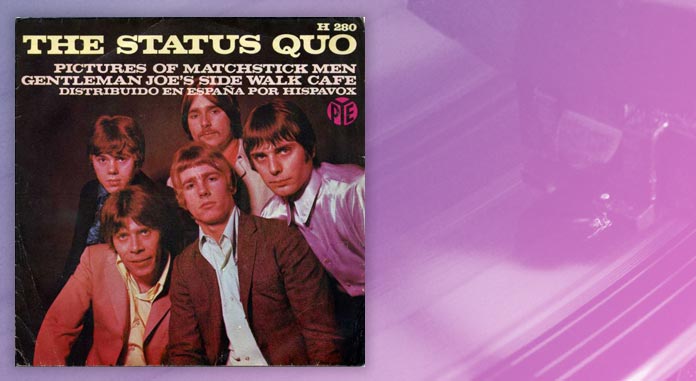Waxing Nostalgic Connecting the Dots: Phasing
Published on September 11th, 2013 in: Music, Waxing Nostalgic |In 1971, I was two years old the house was awash in mild psychedelia. We had an aluminum Christmas tree, all silver. The branches were metal spikes that fit into a pre-drilled steel tube. Reflective bits of Mylar replaced the false pine needles. We also had a color wheel, four plastic cels of colored plastic revolving slowly in front of a bare light bulb. Groovy? Yeah, man.
The living room awash in color, my father had the music playing as usual. I was sitting on the couch under my own power, which was a relatively new thing for me. The speakers were huge and he liked it loud. He took a sip from his drink, looked at me levelly, and said, “Phasing.”
Phasing. As a two year old, I had no clue what that meant. I was just getting the basics of sphincter control down. As an adult, I know what it is, but still can’t quite explain how it works.
I turned to my friend George Middlebrooks, Knoxville musician for a technical explanation.
George said, “There are a couple different definitions. There’s the effect of a ‘phaser,’ which is a combo of modulation and envelope filtering. Then there is speaker/source phase, which is basically the syncing of two sound sources where it’s assumed that the sources are a different distance from the ear, so you get full stereo sound. If the two sources are the exact same distances, the waves overlap and you get phase cancellation and the sound is weird and thin.”
Let me put it this way. You know how in some songs, while the music plays, you can hear a different tone in the music that just goes up and down? George called it the “early Corgan whooshy sound.”
To me, it sounds like someone has taken the back part of the tune and flushed it down a toilet made of crystal, so that part of the song stays where it is supposed to, but the rest breaks up into swirling shards of sparkly chromatic magic.
Phasing sounds like what our old Christmas tree looked like.
This became quite important in a formative sense. It wasn’t just looking for a specific band or a song I liked. It was an actual sound. It may be a studio trick or an effects pedal, but it was something I could identify. “Oh, this musician is using phasing on that acoustic track. I know what that is!”
It was like having a key to the back door of the mysterious places where music was made.
The first song I recall hearing and comprehending phasing in was “Pictures of Matchstick Men” by Status Quo. That band formed in 1962 and they are still together, which is amazing. Some buildings don’t last that long. The song itself was remade years later by Camper Van Beethoven, but without the obvious phasing that made the original so memorable (okay, there’s a little bit on the violin towards the end, but it’s not that overwhelming hypnoswirl that phasing has the potential of becoming).
You can listen to the original “Pictures of Matchstick Men.” The phasing starts at 1:24.
One of the most famous examples of phasing is in the Yes song “Starship Trooper.” It’s not a song a lot of folks listen to nowadays, because it’s almost ten minutes long. It’s a little epic, but what do you expect from a song that has three movements? The cool phasing bit starts at 5:48.
Maybe it is just a sound effect, the groovy hippie version of the Wilhelm Scream, but it meant something to me. Another neural pathway was burned. That affinity for weird sound effects came in quite handy during the Eighties, but we’re not even close to that madness yet.

Time limit is exhausted. Please reload the CAPTCHA.